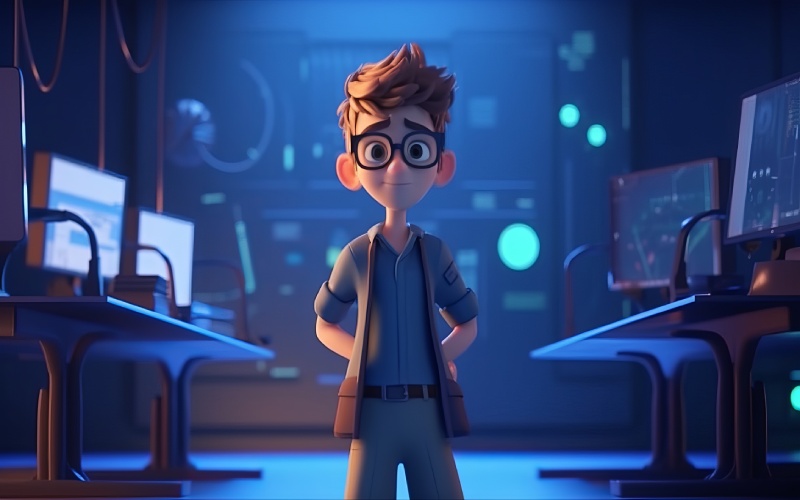All motion-based media is based on the 12 principles. These concepts and how they might appear in the work of an animator are taught to animation students first-hand.
A collection of fundamental guidelines for a skilled animator is called The 12 Principles of Animation. In their 1981 book The Illusion of Life: Disney Animation, Ollie Johnston and Frank Thomas outlined the list, which has been helpful to Disney animators since the 1930s. Nearly 40 years later, many of these fundamental concepts are still applied in animation academies in Kolkata all around the world. While new and varied ideas have been included into animation as technology and other industries have developed, the fundamentals are still present in modern films and web design.
What are the 12 Core Principles?
- Squash and stretch
- Anticipation
- Staging
- Straight-ahead action and pose-to-pose
- Follow through and overlapping action
- Slow in and slow out
- Arc
- Secondary action
- Timing
- Exaggeration
- Solid drawing
- Appeal
These 12 principles are an integral part of curriculum at all leading animation institutes in Kolkata.
Squash and Stretch
Squash and stretch are used to give drawn or computer animated objects a sense of weight and flexibility. It can be used to describe more intricate constructions like the muscles of a human face or simple objects like a ball that bounces. A figure that has been stretched or compressed to an excessive degree might create a hilarious impact. However, the most crucial component of this principle in realistic animation is that an object’s volume does not vary whether it is compressed or stretched. A ball’s width must decrease in proportionally if its length is expanded vertically.
Anticipation
The use of anticipation helps to make an action seem more lifelike and to have the audience ready for it. In the same way that a ballerina must first bend her knees before jumping off the floor, a golfer must first swing the club back. The method can also be applied to less physically demanding movements, including a character gazing off-screen to signal an impending visitor, or directing their attention to something they are about to pick up.
Staging
This idea is comparable to staging, which is a term used in theatre and movies. Its goal is to focus the audience’s attention and highlight the elements of a scene that are most crucial. Whether the idea is a practice, a personality trait, an expression, or a state of mind, it is described as “the portrayal of any idea so that it is totally and undeniably clear.”
Straight Ahead Action and Pose to Pose
These two methods of drawing are different from one another. Action scenes that happen immediately are depicted frame by frame from start to finish, whereas “pose to pose” scenarios are created by first drawing the crucial frames and then filling in the gaps later.”Straight ahead action” is preferable for crafting realistic action scenes since it gives the appearance of movement a more fluid, dynamic feel. On the other hand, maintaining proportions and developing precise, believable stances along the way might be challenging. For dramatic or emotional scenarios, where composition and relationship to the surroundings are more crucial, “pose to pose” works well.
Follow Through and Overlapping
The terms “follow through” and “overlapping action” refer to two interrelated strategies that enhance movement realism and create the sense that characters obey physical laws, such as the law of inertia. “Follow through” refers to the idea that loosely coupled body parts ought to maintain motion after the storyteller has stopped, and they should continue moving past the character’s stopping point before being “pulled back” regarding the centre of mass or displaying varying degrees of movement compression.
Slow in and out
Real-world items, like the human body, animals, automobiles, etc., need time to accelerate and decelerate. In order to generate more lifelike movements, extra images are drawn at the start and finish of an action, generating a slow in and slow out effect. The extreme poses of the object are highlighted by this idea. In contrast, fewer images are generated in the animation’s centre to emphasise movement that happens quickly. The bouncing ball in the example above is an example of an inanimate moving item that follows this rule. The best animation institutes will give you enough projects to master this skill.
Arc
Animation should follow inferred “arcs” for more realism since most natural action tends to follow an arched trajectory. This method can be used to rotate a joint in a moving limb or launch an object with a parabolic trajectory. The only exception is mechanical motion, which is usually linear.
Arcs often flatten out when travelling forward and broaden when turning as an object’s speed or momentum rises.
These are the core 7 principles explained above. If you wish to learn all the 12 principles in detail, then you have to enrol in an animation academy. A professional training course will help you to get full grip over all the principles of animation. For more information about leading animation courses with 100% job placement assistance, you can reach out to us.
All the best!

